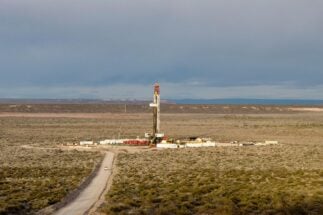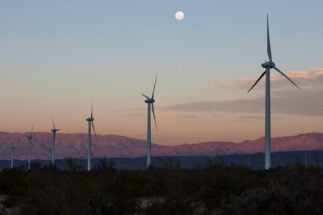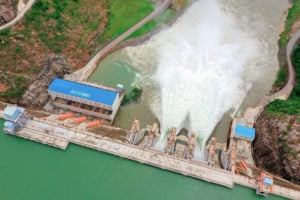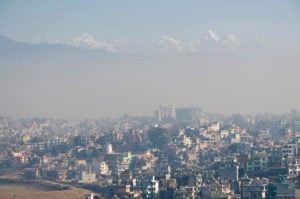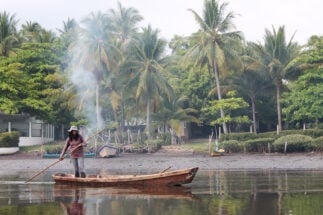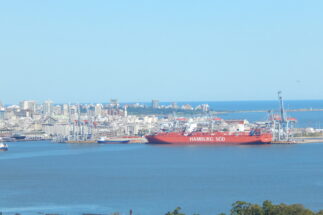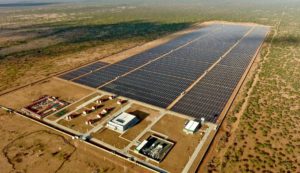In 2020, Argentina pledged not to exceed 349 million tonnes of carbon dioxide equivalent (MtCO2e) in 2030 – a 4.6% reduction on emissions recorded in 2018, the most recent year for which data is available. The country’s new “Climate Change Adaptation and Mitigation Plan” is a roadmap for making this happen.
The plan includes 250 public policy measures to be implemented by 2030 and prioritises natural gas as a transition fuel. It also calls for lower emissions in agriculture and livestock activity, and focuses heavily on improving water management.
The cost? More than US$185 billion, equivalent to 40% of Argentina’s GDP in 2021. The government has already announced that it will seek international financing to implement it.
“One of the main objectives of the plan was to make climate change a cross-cutting issue in all areas of the national government,” explains Florencia Mitchell, national director of climate change at Argentina’s environment ministry. “In creating the plan, we’re taking the first step towards achieving that.”
The plan proposes action on areas including agroecology, reducing food waste, controlling deforestation, conserving natural ecosystems and improving livestock practices, such as by raising a larger number of cows on less land.
However, experts warn that it fails to define sufficient metrics to check progress over time. “Of the 122 mitigation measures, only 18 have quantifiable emission reduction potential,” says Belén Alejandra Silva, an Argentinean environmental consultant. “There are 36 measures that do not have defined targets and another 56 without indicators.”
Gasification – stranded assets?
The energy sector, excluding transport, contributes 37% of Argentina’s emissions. To reduce these, the plan proposes the use of natural gas as a priority. “Measures will be implemented to gasify energy consumption currently supplied by liquid fuels derived from petroleum,” the document states.
Vaca Muerta – one of the largest unconventional hydrocarbon deposits in the world, in Neuquén province, northwest Patagonia – is seen as key to increasing natural gas production in the country.

“Given the level of poverty in Argentina, a huge number of people need energy [but are currently unable to access it],” says Diego Roger, a researcher at the University of Quilmes and an energy specialist. “It is not possible to increase the supply to the levels they’ll require with renewables alone, because of issues of cost, grid stability and infrastructure. Gas is a relatively clean alternative.”
The plan also refers to the expansion of renewables and cites Law 27.191, which establishes that by the end of 2025, 20% of electricity consumption must come from clean sources. According to official data, the renewables sector had a 13.5% share of Argentina’s energy demand in the third quarter of 2022. Although the share of renewables has been on the rise (from 2.5% of demand in 2018), investments have slowed since 2019 as a result of the economic crisis.
Despite this, official estimates indicate that the share of fossil sources in electricity generation will fall from around 60% at present to 30-40% in 2030. This improvement could be supported by the implementation of hydroelectric projects such as Aña Cuá, Jorge Cepernic, Néstor Kirchner and Chihuido I, the plan states.
“Currently, 64% of the population has gas and 94% has electricity [in their homes],” says Pablo Bertinat, director of the Energy and Sustainability Observatory at Argentina’s National Technological University. “Therefore, rather than moving towards massive gasification, it’s more viable to improve the country’s electricity infrastructure and thus avoid having stranded gas assets in 15 years’ time.”
Transport – moving on from oil
The transport sector accounts for 13% of Argentina’s emissions.
There are almost 15 million vehicles in Argentina, of which 7 out of 10 run on gasoline, 2 on diesel and 1 on Compressed Natural Gas (CNG), according to figures from the Argentinean Association of Component Factories (AFAC). Electric and hybrid vehicles account for less than 10,000 units between them.
The plan aims for 9.5% of diesel and gasoline light utility vehicles to be replaced by electric versions by 2030, while the percentage of the total fleet converted to CNG would rise from 9% to 15%. In addition, 6.8% of diesel and gasoline heavy-duty vehicles would be replaced with electric versions, and the percentage of CNG units would rise from 3.5% of the total fleet to 10.7%.
Also planned is the replacement of 13,000 vehicles belonging to the national government with electric-powered versions. The same is intended for up to 146,000 provincial and other government vehicles.
“Full energy metering, from the [oil] well to the wheel of the vehicle, offers an advantage for electric vehicles, especially for urban use, over traditional engines,” explains Gabriel Correa Perelmuter, researcher at the National Council for Scientific and Technical Research of Argentina (CONICET). He says that as renewable energy grows its share of total electricity generated, electric vehicles will increasingly be considered the more sustainable option over combustion vehicles.
The plan also aims to replace 22% (8,847 units) of urban buses with electric buses by 2030 and to incorporate more than 7,000 CNG buses into the regular urban fleet. For long-distance passenger transport, almost 4,000 CNG buses and around 2,750 LNG (liquefied natural gas) buses will be incorporated. Today, public transport in Argentina runs mostly on naphtha diesel fuel.
Fernando Canedo, executive director of Adefa, an entity representing automotive companies, explains that “at these early stages, we are on the way to hybrid engines. It is also possible to replace the fleet of urban, cargo, medium- and long-distance buses if there is good financing. Regarding cargo trucks, manufacturers are already building units with CNG and LNG, which emit much less than gasoline.”
The plan also mentions measures to strengthen the railway system and to improve the energy and environmental performance of ships. Argentina’s agricultural exports, including soybeans, corn, wheat and barley, travel in large cargo ships.
Land use – controlling forest loss
Emissions associated with land use changes – to forest, cropland and grassland – livestock management and fertiliser application accounted for 39% of Argentina’s total emissions in 2018. Deforestation releases carbon stored in ecosystems and reduces the soil’s capacity to absorb carbon from the atmosphere.
According to official data, Argentina has the sixth largest cultivated land area of any country, with 39 million hectares, mainly located in the fertile Chaco-Pampa plains. And it is among the ten countries with the highest net forest loss in the period 2000–2015.
“Today, the most important thing is how to prevent natural ecosystems from continuing to be converted into land for agriculture and livestock farming,” warns Catalina Gonda, co-coordinator of FARN’s Climate Policy area. The chapter on land use is one of the components of the plan with the least detail in terms of baselines, targets and indicators, says Gonda.
In the case of livestock, which accounts for 16% of the country’s total emissions, the plan proposes reducing greenhouse gas intensity (emissions per kilo of meat) by increasing the efficiency of the production system.
It also envisages the promotion of agro-ecological livestock farming, which consists of systems based on perennial pastures with moderate stocking rates. But Gonda warns that improved efficiency may be accompanied by an increase in total emissions if the number of livestock continues to grow.
Adaptation – managing water
Florencia Mitchell, of the environment ministry, says: “The main component of the adaptation component is water resource management, whether to deal with new situations of scarcity, such as droughts, or excess, i.e. floods. This is where the need for public works to improve access to water for populations, and for productive systems and crop rotation to increase water capture from the soil, come in.”
The largest budget item in the plan, US$68 billion, is for the expansion of safe water and sanitation coverage. Currently, about 80% of Argentina’s population has access to safe water and 56% to sanitation, with less access in rural compared to urban areas.
The plan also aims to strengthen conservation programmes for native forests, the development of early warning systems for fires and actions for the conservation, management and restoration of wetlands. Bills to protect wetlands have been debated in Congress since 2013, but no consensus has yet been reached, despite continued forest fires.
Funding – international help
The US$185 billion that the public sector would have to invest to fulfil the plan represents a major challenge in the context of fiscal restraint suffered by the state. Argentina has a foreign debt of US$271 billion (56% of its GDP) and must reduce its public spending as part of its agreement with the International Monetary Fund.
The Argentine government has repeatedly highlighted the country’s role as a provider of ecosystem services to the rest of the world – for example in the way that the native forests of the Gran Chaco basin help to capture greenhouse gas emissions. In addition, the government has called for the development of debt-for-climate action swaps, which would allow it to meet environmental targets in exchange for reduced debt payments.
“One of the priorities for 2023 is to identify how much money is already being invested in the climate crisis,” says Mitchell. “Another is to define an international climate finance strategy, because domestic funds are not going to be enough.”
